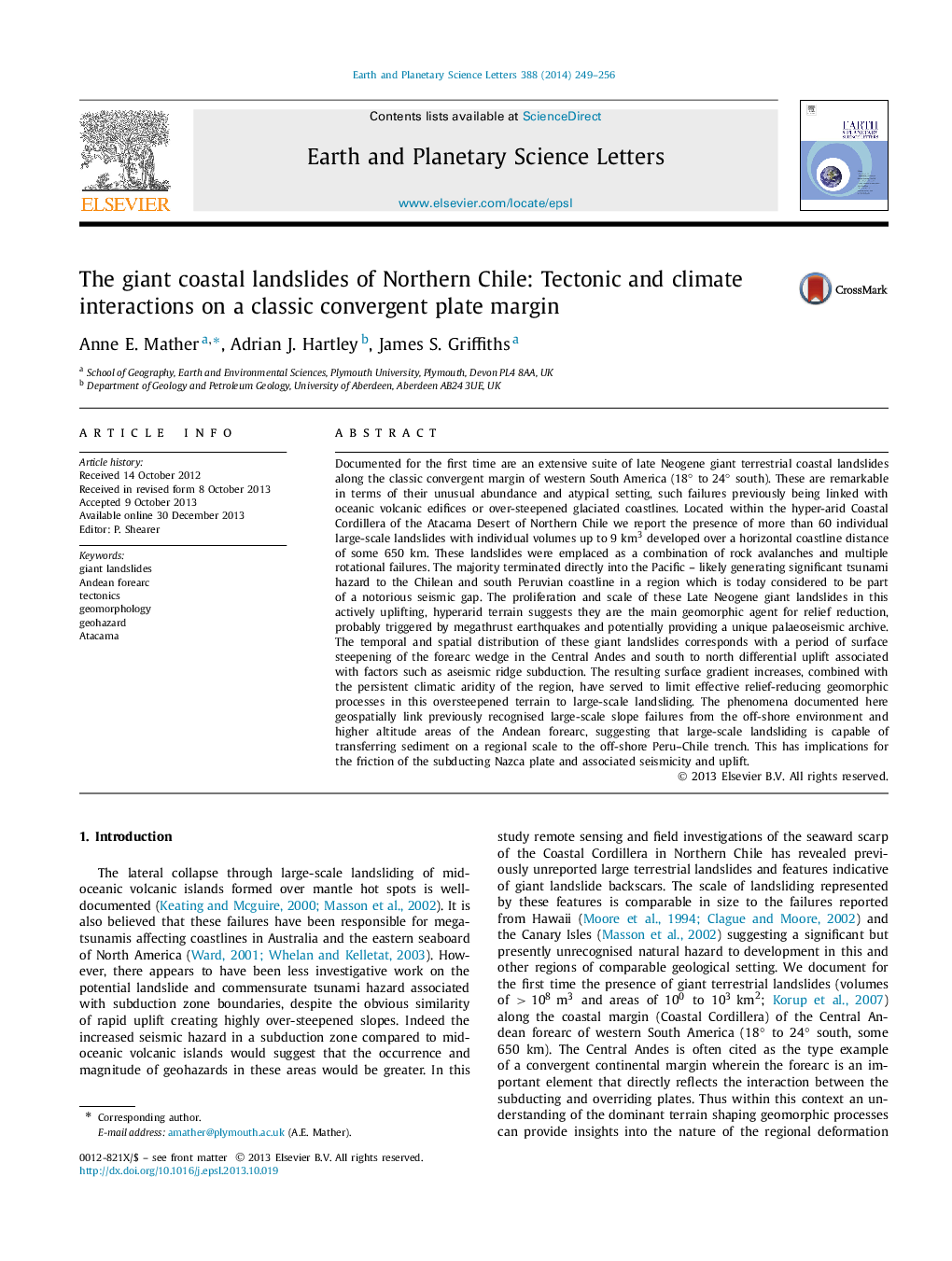| کد مقاله | کد نشریه | سال انتشار | مقاله انگلیسی | نسخه تمام متن |
|---|---|---|---|---|
| 6429786 | 1634768 | 2014 | 8 صفحه PDF | دانلود رایگان |
- Furthers knowledge of geomorphic response to oversteepening in a classic convergent margin.
- Furthers knowledge on coastal giant landslides (location, mechanism of emplacement, hazard).
- Highlights role of climate via controlling the effectiveness of geomorphic processes onshore.
- Identifies main geomorphic transfer mechanism for delivering sediment to offshore trench.
Documented for the first time are an extensive suite of late Neogene giant terrestrial coastal landslides along the classic convergent margin of western South America (18° to 24° south). These are remarkable in terms of their unusual abundance and atypical setting, such failures previously being linked with oceanic volcanic edifices or over-steepened glaciated coastlines. Located within the hyper-arid Coastal Cordillera of the Atacama Desert of Northern Chile we report the presence of more than 60 individual large-scale landslides with individual volumes up to 9 km3 developed over a horizontal coastline distance of some 650 km. These landslides were emplaced as a combination of rock avalanches and multiple rotational failures. The majority terminated directly into the Pacific - likely generating significant tsunami hazard to the Chilean and south Peruvian coastline in a region which is today considered to be part of a notorious seismic gap. The proliferation and scale of these Late Neogene giant landslides in this actively uplifting, hyperarid terrain suggests they are the main geomorphic agent for relief reduction, probably triggered by megathrust earthquakes and potentially providing a unique palaeoseismic archive. The temporal and spatial distribution of these giant landslides corresponds with a period of surface steepening of the forearc wedge in the Central Andes and south to north differential uplift associated with factors such as aseismic ridge subduction. The resulting surface gradient increases, combined with the persistent climatic aridity of the region, have served to limit effective relief-reducing geomorphic processes in this oversteepened terrain to large-scale landsliding. The phenomena documented here geospatially link previously recognised large-scale slope failures from the off-shore environment and higher altitude areas of the Andean forearc, suggesting that large-scale landsliding is capable of transferring sediment on a regional scale to the off-shore Peru-Chile trench. This has implications for the friction of the subducting Nazca plate and associated seismicity and uplift.
Journal: Earth and Planetary Science Letters - Volume 388, 15 February 2014, Pages 249-256
